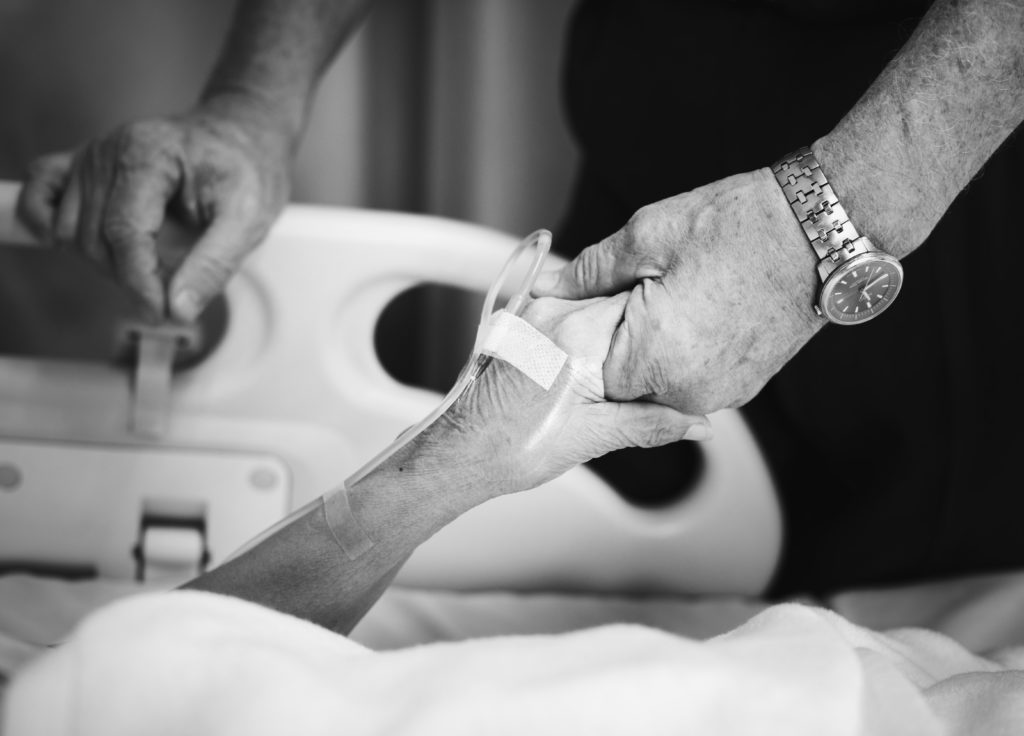
End of life decisions: Signing a DNR or AND order
Written by: Dr. Simon Oczkowski, critical care doctor
You may have heard the term DNR in your favourite medical dramas on TV. Characters will sometimes refer to the acronym when a patient is dying and they are deciding what to do next. There are some misconceptions around the term and what it means for people and their families. I hope this information will help you understand more about it, and encourage you to make your preferences known to your loved ones.
What is it?
A medical order that indicates a person prefers not to receive some elements of resuscitation, such as chest compressions, defibrillation (shocks), or breathing machines. Without a DNR or AND order, healthcare workers provide all aspects of resuscitation by default, whether or not they are what a patient would want to receive.
Resuscitation includes many aspects of care such as:
- Cardiopulmonary resuscitation (more commonly known as CPR or chest compressions, where the team pushes on your chest to keep blood flowing to the brain and heart)
- Defibrillation (electrical shocks to reset the heart rhythm)
- Blood products (transfusion)
- Airway management (breathing machines)
- Vasopressor (medications to keep blood pressure up, such as epinephrine)
What is the difference between DNR and AND?
DNR – Do not resuscitate
AND – Allow natural Death
The term “DNR” is falling out of favour as it implies that resuscitation is an “all or nothing” choice, which it is not. It has a negative connotation, as it focuses on what healthcare providers are not doing for a patient. This may make some patients and families uncomfortable with a DNR because it makes it seem like they are “giving up” and that their team will no longer care for them, which is not true.
Using the term “AND” order instead puts the emphasis on what you are allowing the patient to do at the end of their life—allowing peaceful, natural death. The team provides comfort and support to the patient and their family.
Filling out a DNR or AND
Many people who are considering signing a DNR or AND order don’t want certain elements of resuscitation but still want other elements. It’s important to consider the different types of resuscitation and what you or a loved one would want. It’s also important to make sure the order you are signing communicates these preferences clearly.
Depending on your health condition, you may be more or less likely to receive certain elements of resuscitation. Talk to your healthcare provider about your unique situation to understand the likelihood of different outcomes. For example, if a patient’s heart stops, CPR, defibrillation, and breathing machines are generally needed to try and restart the heart. About 10-15% of the time the heart can be restarted. About half of patients who survive will have some form of brain damage.
A healthcare provider may initiate a conversation about a DNR or AND with you or your family in the hospital. As a rule of thumb, providers will ask themselves the ‘surprise question’, “would I be surprised if this patient died in the next year?” If they answer no, it’s a reminder to have a discussion around life saving measures. This is often done in the emergency room, hospital ward, or intensive care unit, so the team knows they will only provide treatments the patient wants.
Having the conversation with your loved ones
It’s important to recognize the need to have the conversation about your wishes at the end of life, and preferences for DNR or AND orders. A lot of people don’t like talking about death and therefore will avoid discussing the “what if” situation. However, when the time comes, it is even harder for families to make a decision when they don’t know what their loved one would have wanted. That is why it’s best for these conversations to take place in advance.
During the conversation, talk about what is a good enough quality of life, what makes life worth living, and what treatments you are willing or unwilling to receive to get to that quality of life. These questions will help your family and healthcare providers make treatment choices on your behalf.
Documenting your preferences
Depending on where you are, the documentation of an AND or DNR order may change. Hospitals generally have their own papers where the order is written. Outside of the hospital, different provinces have DNR or AND forms available.
People also often provide an advance directive with their will indicating their resuscitation preferences. While these ‘advance directives’ in wills are not medical orders in the same way as a DNR or AND, they can provide your health care providers and your family with guidance if you are unable to let them know.
More information can be found at www.advancecareplanning.ca
